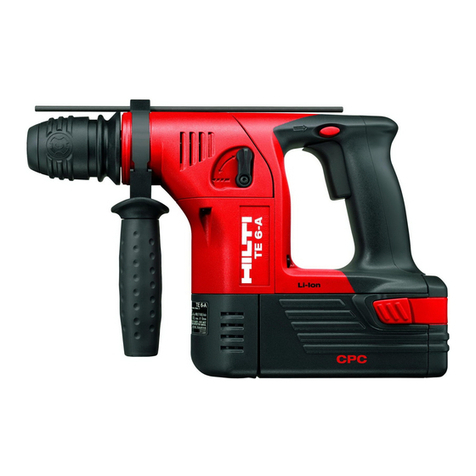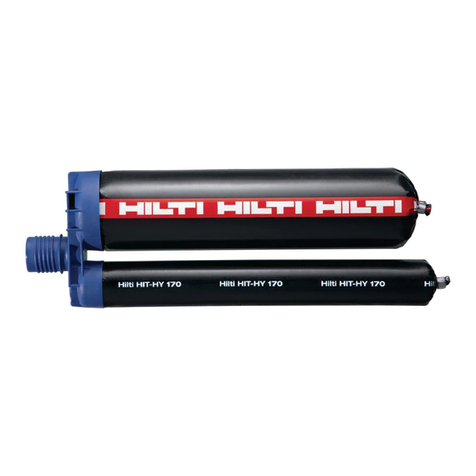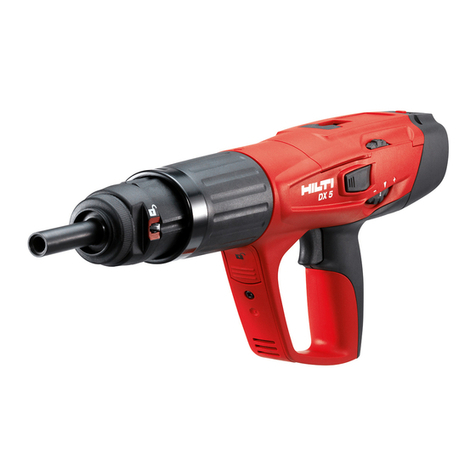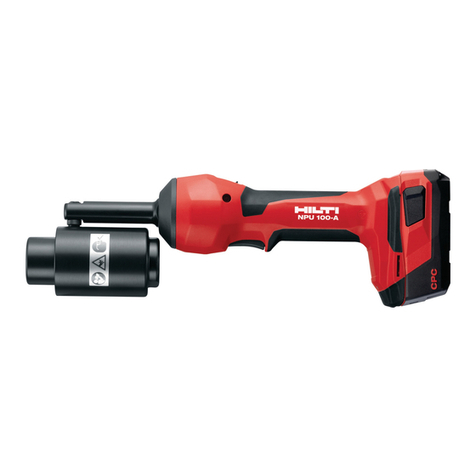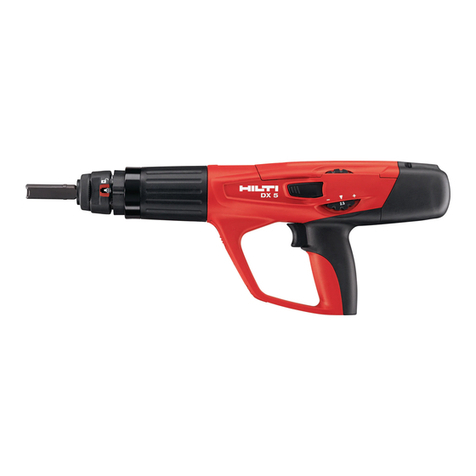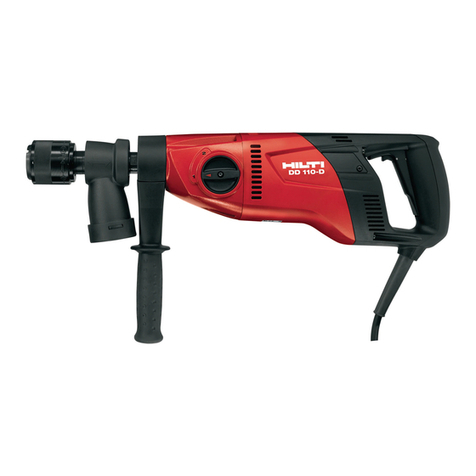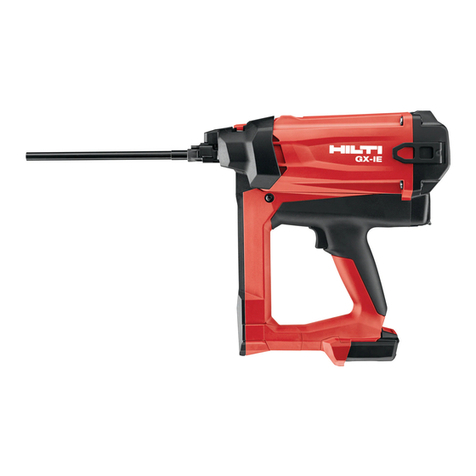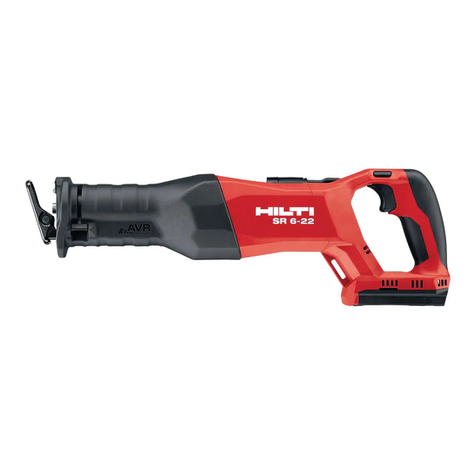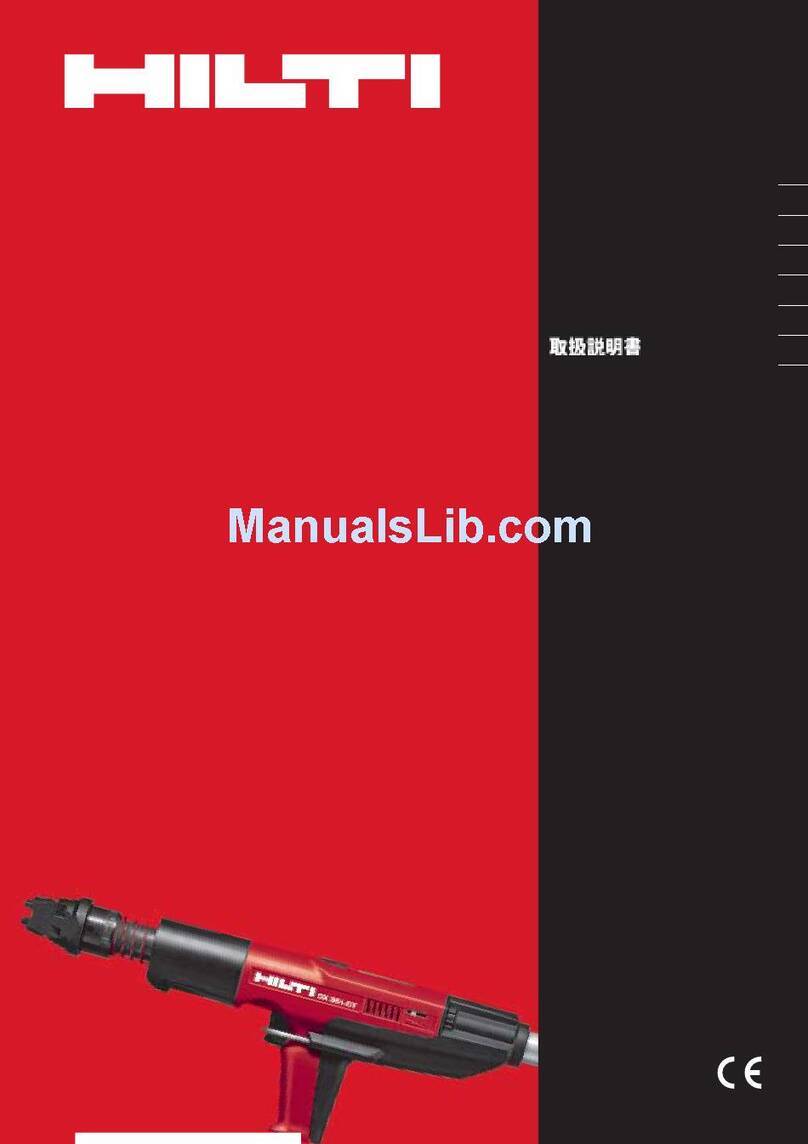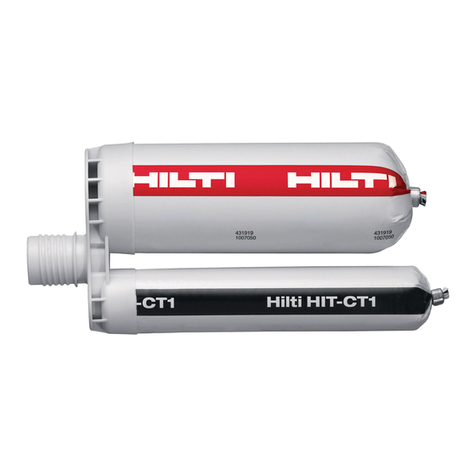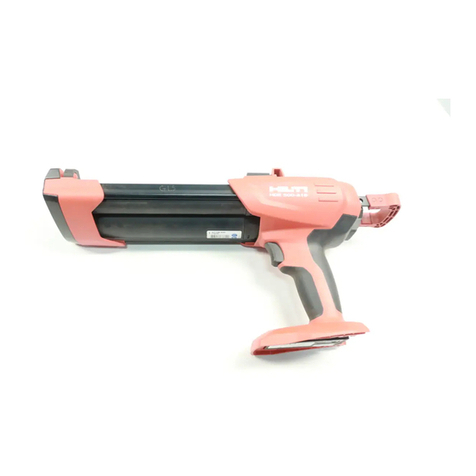
*388037* 388037 English 3
Requirements to be met by users
▶Only appropriately trained persons who have been duly authorized and informed of the possible hazards
are allowed to operate or service this fastening tool.
▶Wear your personal protective equipment while the tool is in use.
▶Wear suitable eye protection and a hard hat.
▶Wear protective gloves. The fastening tool can get hot in use.
▶Wear ear protectors. The ignition of a propellant charge can damage the hearing.
▶Wear non-skid shoes.
Safety at the workplace
▶Keep the workplace tidy. Objects which could cause injury should be removed from the working area.
Disorder in the working zone can lead to accidents.
▶Make sure that the working area is well lit and, when working in an enclosed space, make sure it is
adequately ventilated.
Personal safety
▶Never press the nosepiece of the fastening tool against your hand or any other part of the body! Never
point the fastening tool toward other persons! → page 8
▶Do not compress the fastening tool with your hand on the magazine or fastener guide, piston or piston
guide or a loaded fastener. Compressing the fastening tool by hand can make the fastening tool ready
to fire, even without a fastener guide installed. This gives rise to a risk of serious injury for yourself and
others.
▶Everyone in the vicinity must wear ear protection, eye protection and a hard hat.
▶Stay alert, watch what you are doing and use common sense when operating a direct fastening tool. Do
not use the fastening tool when you are tired or under the influence of drugs, alcohol or medication. Stop
working if you experience pain or feel unwell. A moment of inattention while operating the fastening tool
can result in serious injury.
▶Avoid working in awkward body positions. Make sure you work from a safe stance and stay in balance
at all times.
▶Keep the arms slightly bent while operating the fastening tool, do not straighten the arms.
▶Keep other people away from the working area, especially children.
Use and care of direct fastening tools
▶Use the fastening tool only for its intended use and only when it is in faultless condition. Do not attempt
to use the tool for purposes for which it is not intended.
▶Do not use the fastening tool in places where there is a risk of fire and explosion.
▶Before driving fasteners, check behind the object to make sure that no-one is present in line with the
fasteners to be driven. Danger of fasteners penetrating right through!
▶Make sure that the nosepiece of the fastening tool is never pointed toward yourself or other persons.
▶Hold the fastening tool only by the gripping surfaces provided for the purpose.
▶Keep the gripping surfaces dry, clean and free from oil and grease.
▶Pull the trigger only when the fastening tool is at right angles to and pressed fully against the work
surface.
▶Before starting work, check the selected energy setting.
▶Carry out a test by driving fasteners into the base material you are working on.
▶When driving fasteners, always hold the fastening tool at right angles to the work surface. This reduces
the risk of a fastener being deflected by the base material.
▶Do not drive fasteners into existing holes except in situations where this is recommended by Hilti.
▶Do not re-use a fastener that was used beforehand - risk of injury! Use a new fastener.
▶Do not attempt to re-drive a fastener that was not driven in deeply enough! The fastener could break.
▶Never leave a loaded fastening tool unattended.
▶Always unload the fastening tool (remove cartridges and fasteners) before cleaning, maintenance and
care, changing the fastener guide, before work breaks and before storing the tool.
▶Transport and store the fastening tool in the Hilti case intended for the purpose.
▶Store fastening tools that are not in use in a dry, secure place where they are inaccessible to children.
▶Always position the nosepiece of the fastening tool on smooth, flat surfaces free of obstructions and fully
supported by the sub-structure.
▶Comply with the specifications for distances from edges and spacing between fasteners (see the section
headed "Minimum distances").

